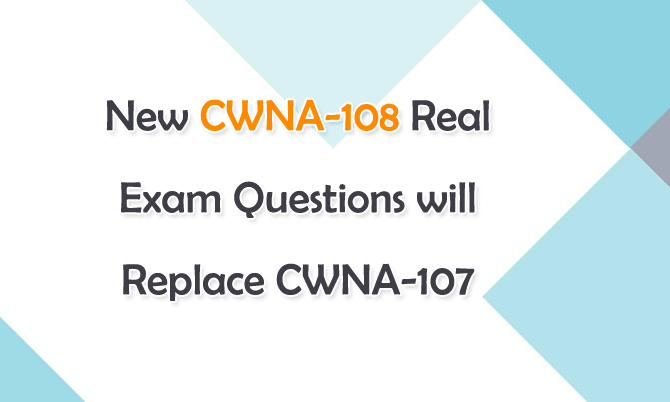CWNA-108 exam is a new required test for CWNA certification, and the old CWNA-107 exam will be retired on December 31, 2020. We all know that CWNA certification is a foundational level wireless LAN certification for the CWNP Program. To earn CWNA certification, you can choose to take CWNA-107 or CWNA-108 exam. When you pass the CWNA exam, you earn credit towards the CWSP, CWDP, CWAP, and CWNE certifications and you earn the CWNA certification.

CWNA CWNA-108 Exam
To earn a CWNA certification, you must take the CWNA exam at a Pearson Vue Testing Center and pass with a 70% or higher. Instructors must pass with a 80% or higher.
Cost: $225.00 (USD)
Availability: Pearson Vue Testing Center
Duration: 90 minutes
Questions: 60 multiple choice/multiple answer
Language: English
Differences Between CWNA-108 and CWNA-107 Exams Objectives
The following chart provides the breakdown of the exam as to the distribution of questions within each knowledge domain. In the following table, you can check the differences between CWNA-108 and CWNA-107 exams objectives.
Study CWNA Certification CWNA-108 Real Exam Questions
We have cracked the latest CWNA certification CWNA-108 real exam questions, which can help you test all the above new CWNA-108 exam objectives. Share some Certified Wireless Network Administrator CWNA-108 real exam questions and answers below.
1.An IEEE 802.11 amendment is in the daft state.What impact does this draft amendment have on the 802.11 standard?
A. Devices will be released based on the draft amendment and the draft amendment features are part of the standard.
B. No impact: Until an amendment is ratified, it does not become part of the standard.
C. No impact: Draft amendments do not become part of the standard until a working group is formed.
D. The standard is changed to reflect the new capabilities as soon as an amendment enters the draft stage.
Answer: B
2.You are implementing a VHT-capable AP.Which one of the following channels is available in the 802.11?2016 standard that was not available before the ratification of 802.11 ac?
A. 56
B. 161
C. 153
D. 144
Answer: D
3.What statement is true concerning the use of Orthogonal Frequency Division Multiplexing (OFDM) modulation method in IEEE 802.11 WLANs?
A. OFDM implements BPSK modulation to allow for data rates up to 7 Gbps.
B. OFDM was first introduced in 802.11a and is used by the ERP, HT and VHT PHYs as well.
C. OFDM modulation is used only in 5 GHz 802.11 transmissions.
D. OFDM was used by Frequency Hopping Spread Spectrum (FHSS) PHY devices.
Answer: B
4.Which IEEE 802.11 physical layer (PHY) specification includes support for and compatibility with both ERP and HR/DSSS?
A. DSSS (802.11-Prime)
B. OFDM (802.11a)
C. HT (802.11n)
D. VHT (802.11ac)
Answer: C
5.An 802.11-based network uses an AP and has several connecting clients. The clients include iPhones, iPads, laptops and one desktop.What WLAN use case is represented?
A. Ad-hoc
B. WPAN
C. BSS
D. IBSS
Answer: C

